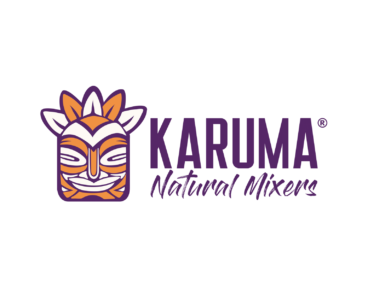So, I was poking around the Bitcoin Ordinals space the other day, and wow—things are moving faster than I expected. Honestly, the whole notion of inscribing data directly onto Bitcoin’s blockchain felt a little sci-fi just a year ago, but here we are. If you’ve been dabbling with BRC-20 tokens and feel like juggling wallets is a bit of a headache, you’re not alone. My first impression? Managing all those tiny digital artifacts should be a nightmare, but somehow wallets like unisat make it surprisingly manageable.
At first glance, unisat feels like just another Bitcoin wallet—right? Wrong. It’s tailor-made for Ordinals and BRC-20 tokens, which is a game changer if you ask me. What hooks me is how it blends simplicity with deep functionality. No fluff, no overcomplication. You can see your Ordinals right alongside your usual BTC balance. That’s something I didn’t expect to see so seamlessly integrated.
Here’s the thing: dealing with Ordinals traditionally required juggling a bunch of tools, often command-line heavy or just plain clunky. But unisat tosses that complexity out the window. It’s not perfect—far from it—but it’s a huge step toward making Bitcoin’s new token space accessible without needing a computer science degree.
Okay, so check this out—using unisat, you can mint, send, and track BRC-20 tokens directly in the wallet interface. That’s a pretty slick feature, considering the ecosystem is still young and evolving rapidly. Honestly, sometimes I wonder if the pace is too fast for the average user, but wallets like this help bridge that gap.
Now, don’t get me wrong, I’m biased toward wallets that keep things user-friendly without sacrificing control. Unisat nails that balance, though occasionally the UI can feel a bit raw around the edges. But hey, that’s crypto for ya—early days and all.

How Unisat Tackles the Ordinals Complexity
Initially, I thought managing Ordinals would be this super technical grind—like needing to wrestle with the blockchain directly or spin up custom scripts. But unisat simplifies this by abstracting the nitty-gritty while still giving you enough transparency to know what’s going on. For example, you get a clear view of your inscriptions and token balances, and even the ability to inscribe new data or mint tokens. Seriously? That’s a huge leap from fumbling with raw hex data or relying on third-party explorers.
Something felt off about some wallets claiming to handle Ordinals, though. They either overpromise or hide key details. Unisat, on the other hand, keeps things very transparent—even if that means showing some rough edges in user experience. It trusts the user enough to explore without babysitting them too much. That approach resonates with me.
On one hand, the learning curve for Ordinals and BRC-20s is steep by design—Bitcoin wasn’t built for this kinda stuff initially. Though actually, that’s what makes the innovation around wallets like unisat so fascinating: they’re adapting a decades-old protocol to a whole new use case, without breaking the rules. It’s almost poetic, if you think about it.
But here’s where it gets tricky. The Ordinals ecosystem is fragmented; not every wallet or platform supports these new token types yet. That fragmentation can feel like a barrier, especially if you want to talk tokens across different wallets or marketplaces. Unisat tries to unify that experience but it’s still early, and the standards keep shifting. So, patience is a virtue here.
By the way, the wallet’s integration with browser extensions makes it super accessible. You can jump in from Chrome or Firefox without installing heavyweight software. That’s a subtle but important detail, since lowering the barrier to entry means more folks can start experimenting and, honestly, that’s how real adoption happens.
Personal Experience: Why I Keep Coming Back to Unisat
I’ll be honest—I’ve tried a handful of wallets for Ordinals, and while some had flashy features, they often felt like half-baked experiments. Unisat, for me, strikes a practical middle ground. It’s not perfect, but it’s reliable and straightforward enough that I don’t second guess sending my inscriptions or tokens.
There was this one time when I accidentally sent an Ordinal to the wrong address—ugh, that part bugs me—but unisat’s clear transaction history helped me trace what happened quickly. Not every wallet offers that level of clarity. Plus, the open-source nature of the project gives me some peace of mind about security and ongoing development.
Something else: the community around unisat is surprisingly active. If you hit a snag, you can usually find quick answers or updates. That kind of support is invaluable, especially in a space evolving as fast as Bitcoin Ordinals and BRC-20 tokens.
Here’s a quick aside—oh, and by the way, if you’re worried about wallet security but want to stay on the cutting edge of Ordinals, unisat’s multi-layered approach to private key management is worth a look. It’s not perfect, and you should always keep backups, but it strikes me as a thoughtful balance between convenience and safety.
What’s Next for Bitcoin Ordinals and Wallets Like Unisat?
Honestly, I’m curious where this all goes. Bitcoin Ordinals introduce a new paradigm, but the ecosystem is still raw and growing. Wallets like unisat are leading the charge by making complex blockchain data approachable and actionable. Without tools like this, the whole space risks being limited to hardcore devs and speculators.
My gut says we’ll see more wallet innovations that blur the line between simple Bitcoin wallets and full-blown NFT/token managers. But that also means more responsibility on developers to keep security tight and interfaces intuitive. It’s a tough balance, and I’m not 100% sure we’ve found the sweet spot yet.
One thing I do know: the more accessible these wallets become, the more everyday users can participate in this new chapter of Bitcoin. That’s powerful. It’s kinda like when smartphones went mainstream—suddenly, a whole new world of apps and possibilities opened up. Ordinals and BRC-20s could be that moment for Bitcoin.
So, if you’re still on the fence about diving into Bitcoin Ordinals or BRC-20 tokens, give unisat a try. It’s not a magic bullet, but it’s probably the most user-friendly gateway right now. And hey, if you get stuck, you’re not alone—this space is new and a little wild, but that’s part of the fun, right?
FAQs About Bitcoin Ordinals and Unisat Wallet
What makes unisat different from other Bitcoin wallets?
Unisat is specifically designed to handle Bitcoin Ordinals and BRC-20 tokens, providing native support for these new token types within a clean, browser-extension-based interface. Unlike traditional wallets, it shows inscriptions alongside BTC balances, offering a more integrated experience.
Is unisat safe to use with my Bitcoin holdings?
While no wallet is 100% foolproof, unisat employs standard private key management and is open source, which adds a layer of transparency. Still, always back up your keys and practice good security hygiene.
Can I mint and send BRC-20 tokens directly from unisat?
Yes, unisat supports minting and transferring BRC-20 tokens right from the wallet, making it one of the few wallets that fully embraces this emerging Bitcoin token standard.
Is unisat suitable for beginners in Ordinals and BRC-20?
It’s definitely more beginner-friendly than most alternatives, though a basic understanding of Bitcoin and wallets is still helpful. The active community and straightforward UI help ease the learning curve.












